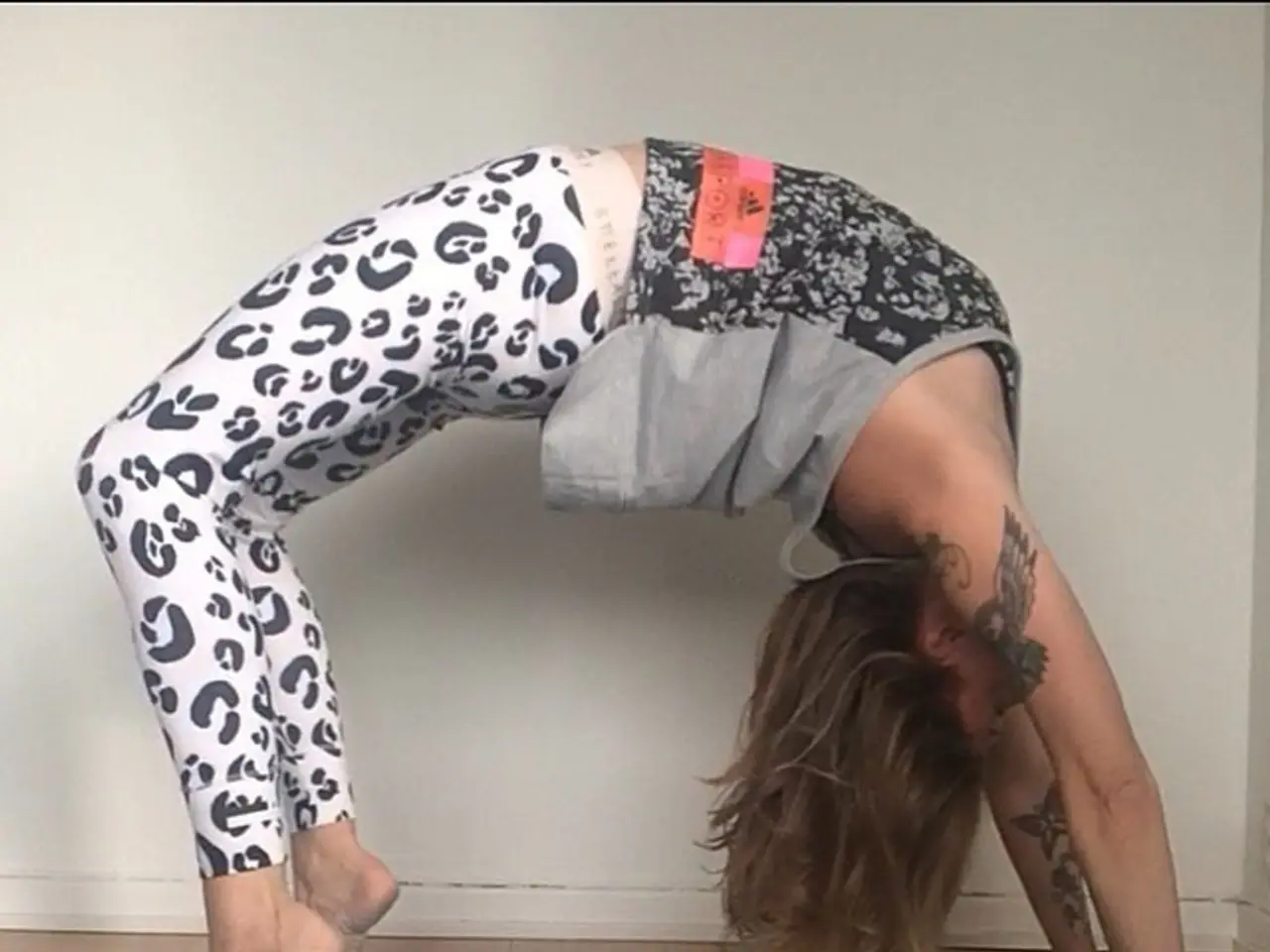Yoga's Impact on Lowering Diabetes Risk: Essential Poses to Practice
A study conducted by the Research Society for the Study of Diabetes in India (RSSDI) suggests that yoga could play a significant role in preventing Type 2 Diabetes (T2DM). The study, titled 'Yoga and Prevention of Type 2 Diabetes', was officially presented to Union Health Minister Shri J.P. Nadda.
Regular practice of certain yoga asanas, when combined with a healthy diet and lifestyle, can reportedly reduce the risk of developing T2DM and enhance overall metabolic health. Here's a look at some yoga poses and their potential benefits:
Improving Digestion and Controlling Stress
Paschimottanasana is a forward bend pose that massages the abdominal organs, improves digestion, and relieves stress. To perform this pose, sit with your legs extended straight in front, inhale and raise your arms, exhale and bend forward from the hips, reaching toward your toes. Keep the spine long and avoid hunching, hold for 30 seconds to 1 minute, breathing gently.
Balancing and Concentrating
Vrikshasana, also known as the Tree Pose, is a balancing pose that improves concentration, reduces stress, and strengthens the nervous system, indirectly aiding in blood sugar control. To perform this pose, stand straight with feet together, lift your right foot and place it on your inner left thigh. Bring your palms together in a prayer position at the chest or raise them overhead, hold for 20-30 seconds, breathing steadily, and repeat on the other side.
Strengthening the Pancreas and Improving Digestion
Dhanurasana, or the Bow Pose, activates the pancreas and strengthens abdominal muscles, improving digestion. To perform this pose, lie on your stomach and bend your knees, reach back to hold your ankles with your hands, inhale and lift your chest and thighs off the floor, arching your back, look forward and hold the pose for 15-20 seconds, release slowly and repeat once or twice.
Stimulating the Pancreas and Promoting Better Insulin Function
Bhujangasana, or the Cobra Pose, stimulates the pancreas and digestive organs, promoting better insulin function. To perform this pose, lie face down on your mat with palms under your shoulders, inhale and slowly lift your chest off the ground using your back muscles (not arms), keep elbows slightly bent and shoulders relaxed, hold for 15-30 seconds, then release back down, and repeat 2-3 times.
Regulating Metabolism, Stimulating the Liver, and Improving Digestion
Ardha Matsyendrasana, or Half Lord of the Fishes Pose, stimulates the liver and pancreas, improves digestion, and regulates metabolism. To perform this pose, sit with your legs extended, bend your right leg and place the foot outside the left thigh, bend your left leg or keep it straight, twist your torso to the right, place your right hand behind and left elbow on the right knee, hold the twist for 30 seconds, then switch sides.
Regulating Thyroid Function, Calming the Mind, and Supporting Hormonal Balance
Setu Bandhasana, or the Bridge Pose, helps regulate thyroid function, calms the mind, and supports hormonal balance. To perform this pose, lie on your back with knees bent and feet flat, arms rest beside you, inhale and lift your hips toward the ceiling, pressing into your feet and shoulders, hold for 30 seconds, then slowly lower down, repeat 2-3 times.
It's important to note that while these poses show promise in reducing the risk of T2DM, this content, including advice, provides generic information only. It is in no way a substitute for a qualified medical opinion. Always consult a specialist or your own doctor for more information.
While comprehensive meta-analyses directly comparing yoga to other forms of exercise in diabetes prevention are limited in the data currently available, the neuroprotective, euglycemic, and stress-reducing benefits of yoga suggest a beneficial role in reducing the risk of developing T2DM through improved glycemic control and reduction of associated risk factors. More comprehensive trials would strengthen this evidence base.
[1] Yoga and Prevention of Type 2 Diabetes: A Review (2018) [2] Yoga for Diabetes Management: A Systematic Review and Meta-Analysis (2015)
Science affirms that the incorporation of yoga, beyond 'Paschimottanasana', 'Vrikshasana', 'Dhanurasana', 'Bhujangasana', 'Ardha Matsyendrasana', and 'Setu Bandhasana', into health-and-wellness routines, combined with fitting nutrition, bolsters fitness-and-exercise, thereby enhancing prospects for T2DM prevention and unveiling overall well-being. However, understanding the specific impact on diabetes prevention requires further scientific examination, especially in comparison with other fitness methods, as suggested by numerous studies such as 'Yoga and Prevention of Type 2 Diabetes: A Review (2018)' and 'Yoga for Diabetes Management: A Systematic Review and Meta-Analysis (2015)'.




